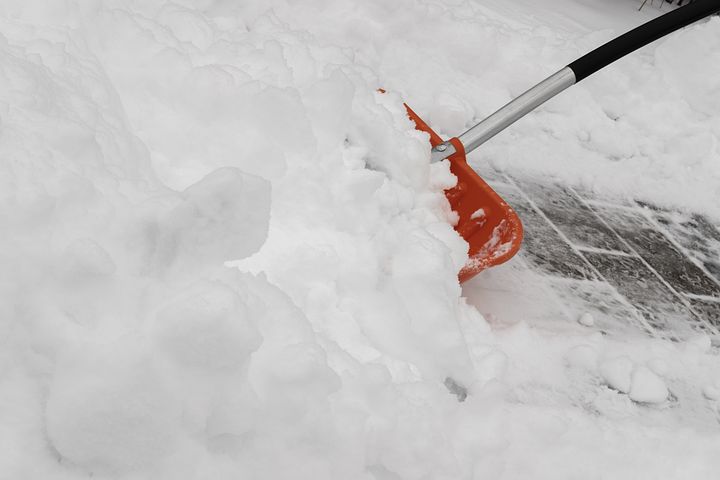
In Iowa and around the Midwest, it’s inevitable. Winter comes, the temperature drops, and our driveways and sidewalks become covered in a blanket of heavy snow. Every year, shoveling snow leads to an average of 11,500 injuries that require medical attention. While it is impossible to prevent all injuries from happening, there are some strategies you can take to decrease the likelihood of injury while shoveling. When you follow these tips, it may make shoveling snow easier for you—or at least, make it feel easier!
Tip 1: Warm Up Before Shoveling Snow
First, it is beneficial to complete a short warm-up before you start shoveling. Warming up will improve tissue extensibility before you attempt to move heavy loads. Something as simple as jogging in place, alternating knees to chest, jumping jacks, and/or standing trunk twists can enhance blood flow enough to reduce injury risk. Tissues that are warm are less likely to be injured with activity, so this is particularly important given the cold temperatures involved with shoveling.
Tip 2: Shovel Smaller Amounts of Snow
Another easy step to take to decrease the risk of injury is to shovel smaller amounts. Shoveling every hour or two as the snow comes down is ideal. This way there is less snow accumulating and therefore less to remove at once.
That said, this is not always an option. If you are stuck shoveling a large total amount of snow, you still want to focus on only scooping and moving smaller amounts at a time. Yes, this may take longer, but it also greatly reduces your risk of injury. Less snow = less weight = reduced injury risk.
Tip 3: Remember Good Shoveling Posture/Body Mechanics
It is also important to keep your body mechanics and posture in mind. You always want to ensure the snow shovel is close to your body, and push the snow instead of lifting it whenever possible. Avoid any lifting combined with twisting/turning and do not extend the shovel away from you when it’s filled with snow. Ensure you are wearing appropriate footwear that has adequate traction in the snow and ice, as slips and falls are a common source of injury when shoveling, as well.
Tip 4: Take Breaks
Lastly, take breaks when needed. Injury risk increases when you are fatigued, so it is important to rest and stretch throughout the snow removal process.
While snow and shoveling are certainly not everyone’s favorite, it is a reality of living in the Midwest. Knowing how to protect yourself from injury when shoveling snow and implementing these snow shoveling tips can help you through many winters to come.
- Allison Dillenburg PT, DPT
